Susquehanna River Subbasin Surveys
The Commission’s Subbasin Survey program was established in the mid-1980s through funding from the U.S. Environmental Protection Agency. The six major subbasins are surveyed on a rotating basis to provide a broad assessment of aquatic communities, instream habitat, and water quality within each subbasin.
Study Design
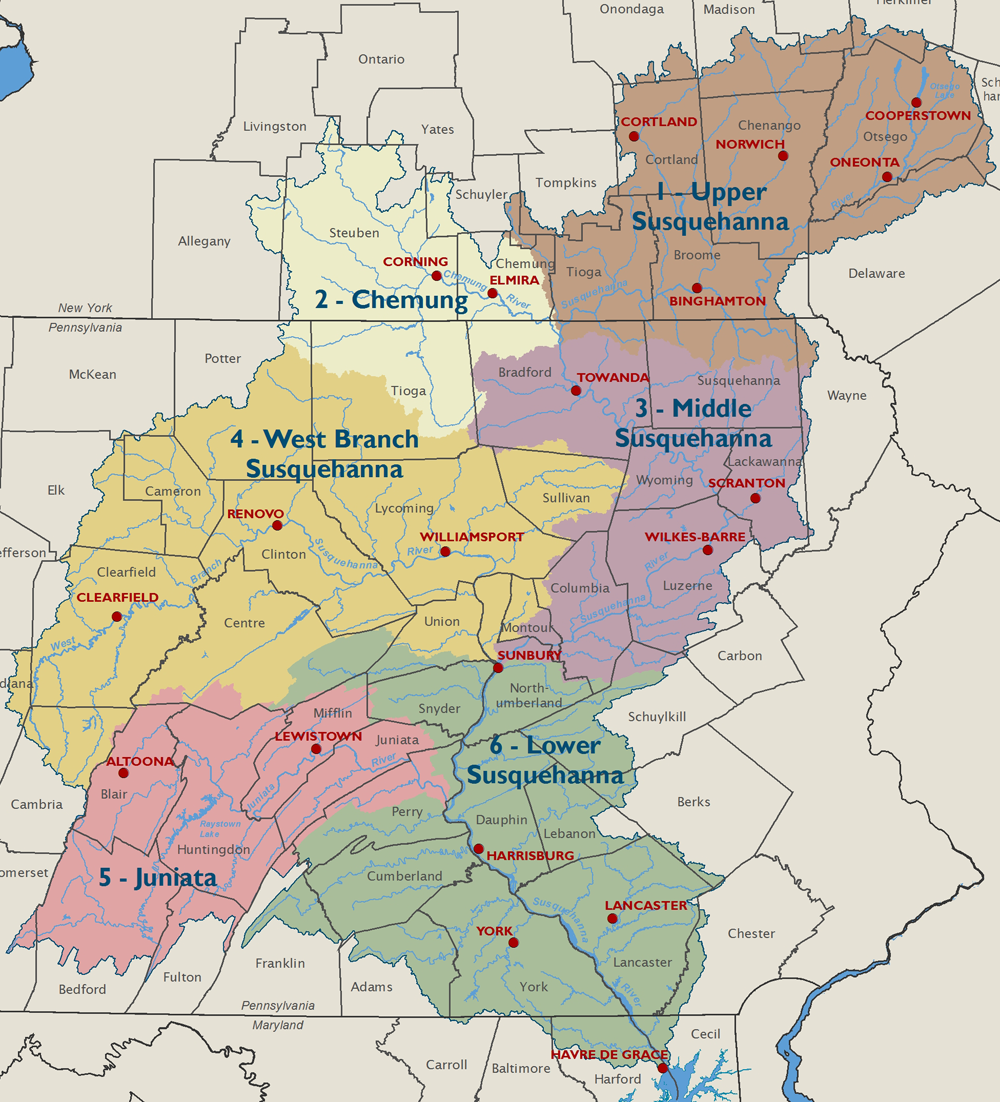 Susquehanna River Subbasins
Susquehanna River Subbasins
Earlier iterations of the Subbasin Survey program primarily targeted convenient access points on major tributaries. Oftentimes, sites that provide easy entry from a bridge or roadway are also subject to runoff, erosion, and/or channel alteration, which can negatively impact local habitat and water quality. Data from targeted sites therefore represent localized conditions and cannot be extrapolated to conditions across the entire subbasin.
In 2014, the Commission began utilizing a spatially balanced probability design to select sites for the Subbasin Survey program. Each year, 20 new sites are randomly chosen from the focus subbasin using the Generalized Random Tessellation Stratified (GRTS) algorithm in the spsurvey R package (Dumelle and others, 2023). The GRTS algorithm produces a representative sample of sites accurately reflecting the spatial distribution of streams across the subbasin based on stream order and ecoregion. The resulting dataset from randomly chosen sites will allow the Commission to make inferences about conditions within each subbasin, as well as in the basin as a whole.
Types of Data Collected
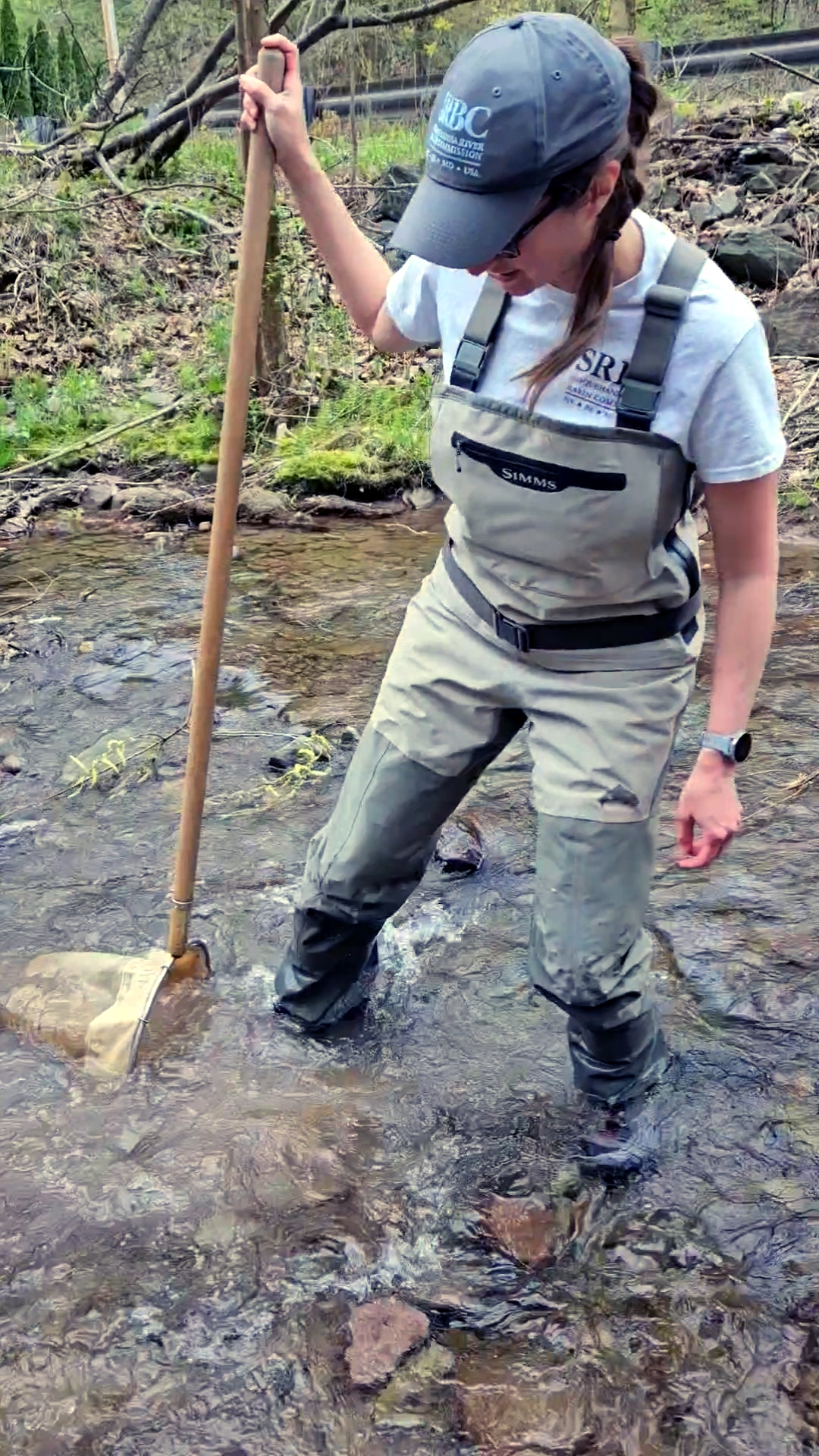 Macroinvertebrate sampling
Macroinvertebrate sampling
Biological Communities
Aquatic organisms can be viewed as living indicators of stream health and the long-term effects of ecosystem stress. Many state and federal agencies have developed indices of biological integrity based on benthic macroinvertebrate communities. Benthic macroinvertebrates are organisms that live on the stream bottom, including aquatic insects, crayfish, snails, bivalves, and worms. Sensitivity to environmental degradation varies among different types of macroinvertebrates, making them ideal biological indicators. The Commission utilizes the Pennsylvania Department of Environmental Protection’s (PADEP’s) protocols for sampling the benthic macroinvertebrate community.
Habitat
Physical habitat conditions impact the ability of a stream to support a healthy biological community. Factors such as substrate composition, velocity-depth regimes, bank stability, and riparian vegetation determine whether or not a stream reach is suitable for particular fish species or macroinvertebrates. The physical habitat at Subbasin Survey sites is assessed using a modified version of the U.S. Environmental Protection Agency’s (USEPA’s) Rapid Bioassessment Protocol (RBP) (Barbour and others, 1999).
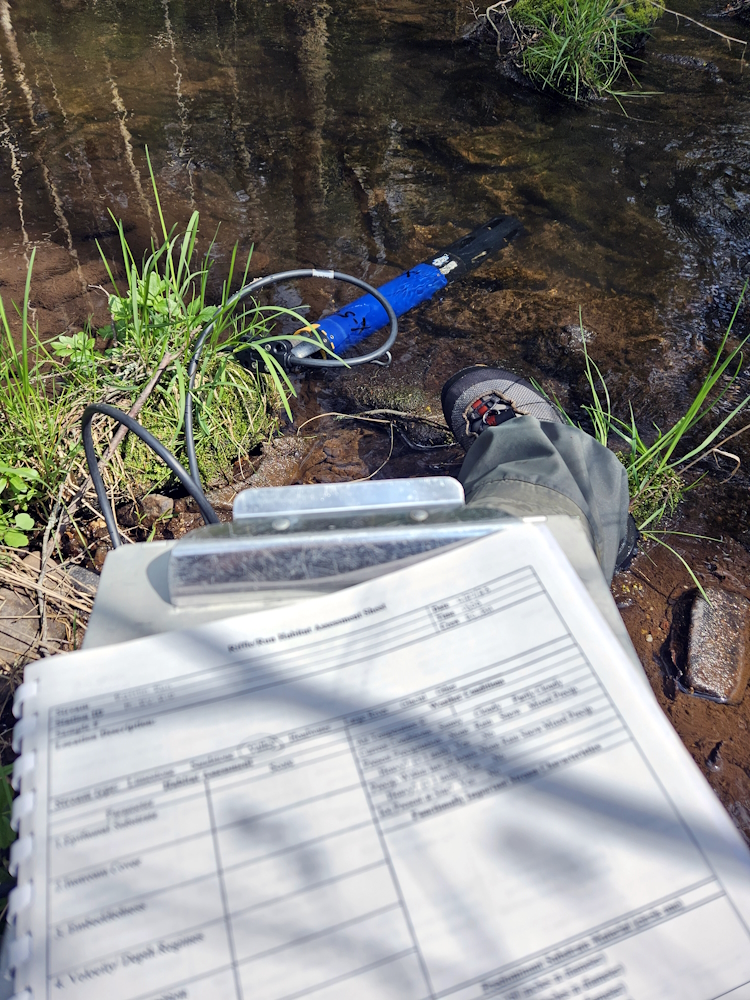 Taking field measurements and completing habitat assessment form
Taking field measurements and completing habitat assessment form
Water Quality
Water quality monitoring data are used by state and federal regulatory agencies to identify current and emerging problems with contaminants, and to determine compliance with drinking water, recreational use, and aquatic life standards. The Commission measures temperature, dissolved oxygen, pH, specific conductivity, and turbidity in the field using handheld meters. Water samples are also sent to a lab to be analyzed for the following parameters: alkalinity, aluminum, calcium, chloride, iron, magnesium, manganese, nitrate, phosphorus, potassium, sodium, sulfate, total dissolved solids, and total organic carbon.
Site Ratings
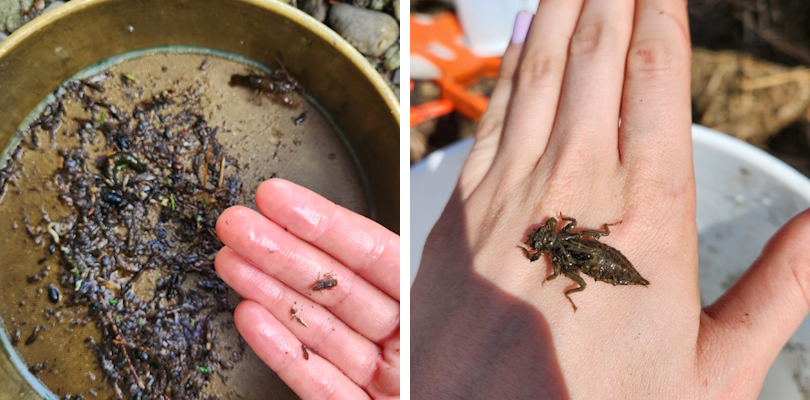
Macroinvertebrates, including Odonata
Each Subbasin Survey site receives condition ratings of excellent, good, fair, poor, or very poor for biological conditions, habitat, and water quality based on the numeric IBI, RBP, and WQI scores. Table 1 summarizes the scoring ranges and corresponding condition categories for each index.
PADEP’s Benthic Index of Biotic Integrity for Freestone Wadeable Streams (IBI) is used to assess the biological community (PADEP, 2013). The IBI incorporates scores from six individual metrics into a single index score with values ranging from 0 to 100.
Physical habitat is categorized based on 11 physical stream characteristics pertaining to substrate, pool and riffle composition, shape of the channel, conditions of the banks, and the riparian zone on a scale of 0 - 20 (20 being optimal). These 11 scores are added together to produce a total RBP habitat score ranging from 0 to 220.
Table 1. Index of Biological Integrity (IBI), Rapid Bioassessment Protocol (RBP), and Water Quality Index (WQI) Scoring Ranges for Condition Category Ratings
| Condition Category | IBI Score | RBP Score | WQI Score |
|---|---|---|---|
| Excellent | ≥ 90 | ≥ 176 | ≥ 85 |
| Good | 78 - 89 | 121 - 175 | 62.01 - 84.99 |
| Fair | 53 - 77 | 66 - 120 | 42.93 - 62 |
| Poor | ≤ 52 | ≤ 65 | 30.99 - 42.92 |
| Very Poor | Less than 160 organisms | -- | ≤ 30.98 |
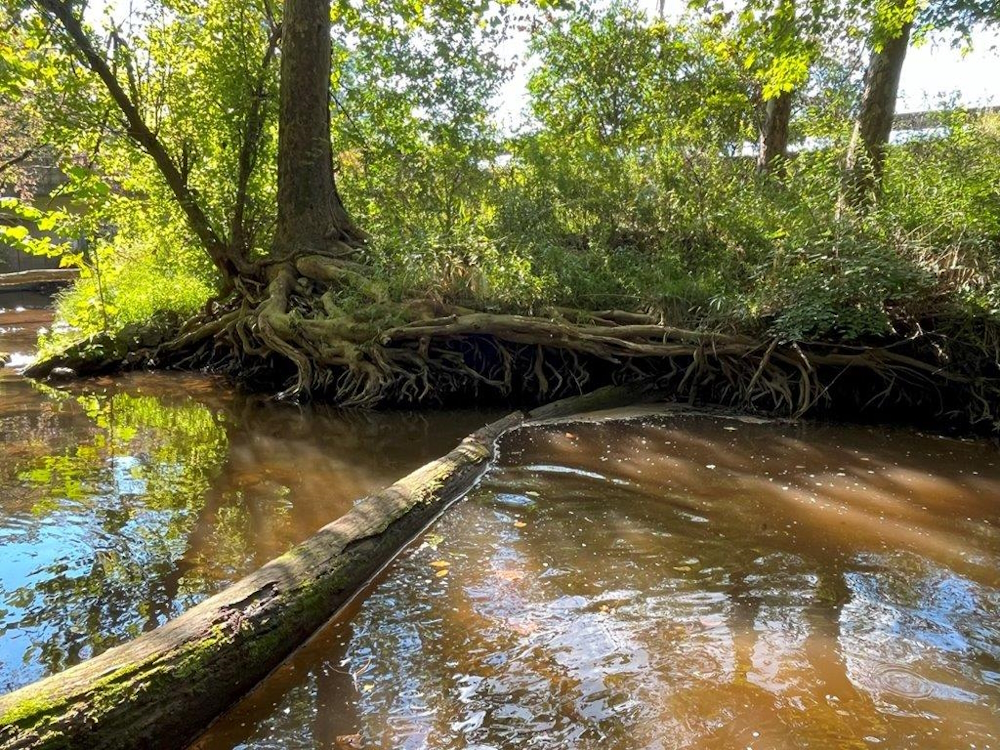 Undercut stream bank
Undercut stream bank
The Commission’s Susquehanna River Basin Water Quality Index (WQI) is used to evaluate water quality conditions. The WQI produces three separate category scores for metals, nutrient enrichment, and development, which are then averaged to produce an overall water quality score between 0 and 100.
Probabilistic Stream & River Survey Dashboard
References
Barbour, M.T., J. Gerritsen, B.D. Snyder, and J.B. Stribling. 1999. Rapid Bioassessment Protocols for Use in Streams and Wadeable Rivers: Periphyton, Benthic Macroinvertebrates, and Fish, Second Edition. EPA 841-B-99-002. U.S. Environmental Protection Agency, Office of Water, Washington, D.C.
Dumelle, M., T. Kincaid, A.R. Olsen, and M. Weber. 2023. spsurvey: Spatial Sampling Design and Analysis in R. Journal of Statistical Software 105(3):1-29. (doi:10.18637/jss.v105.i03)
Pennsylvania Department of Environmental Protection (PADEP). 2013.
An Index of Biotic Integrity for Benthic Macroinvertebrate Communities
in Pennsylvania’s Wadeable, Freestone, Riffle Run Streams.
https://www.dep.pa.gov/Business/Water/CleanWater/WaterQuality/Pages/Macroinvertebrates.aspx
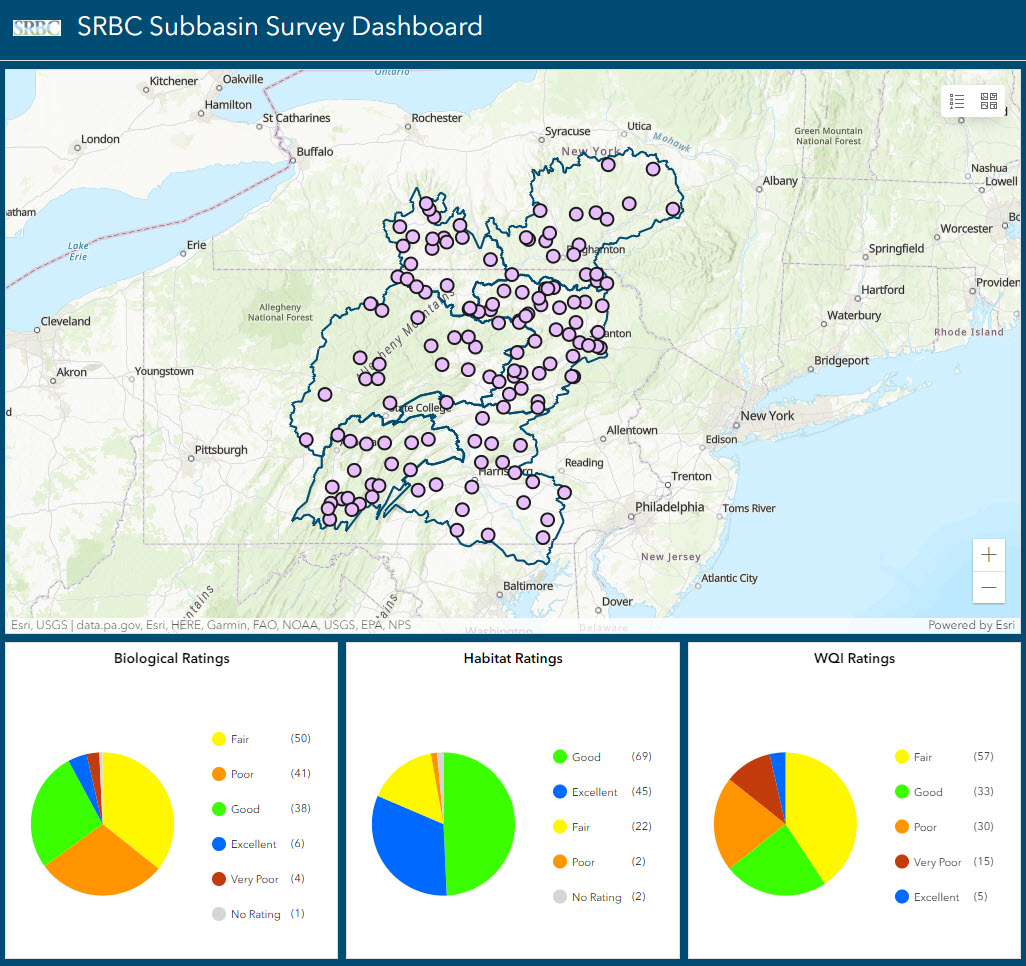 Click to Access Dashboard
Click to Access Dashboard